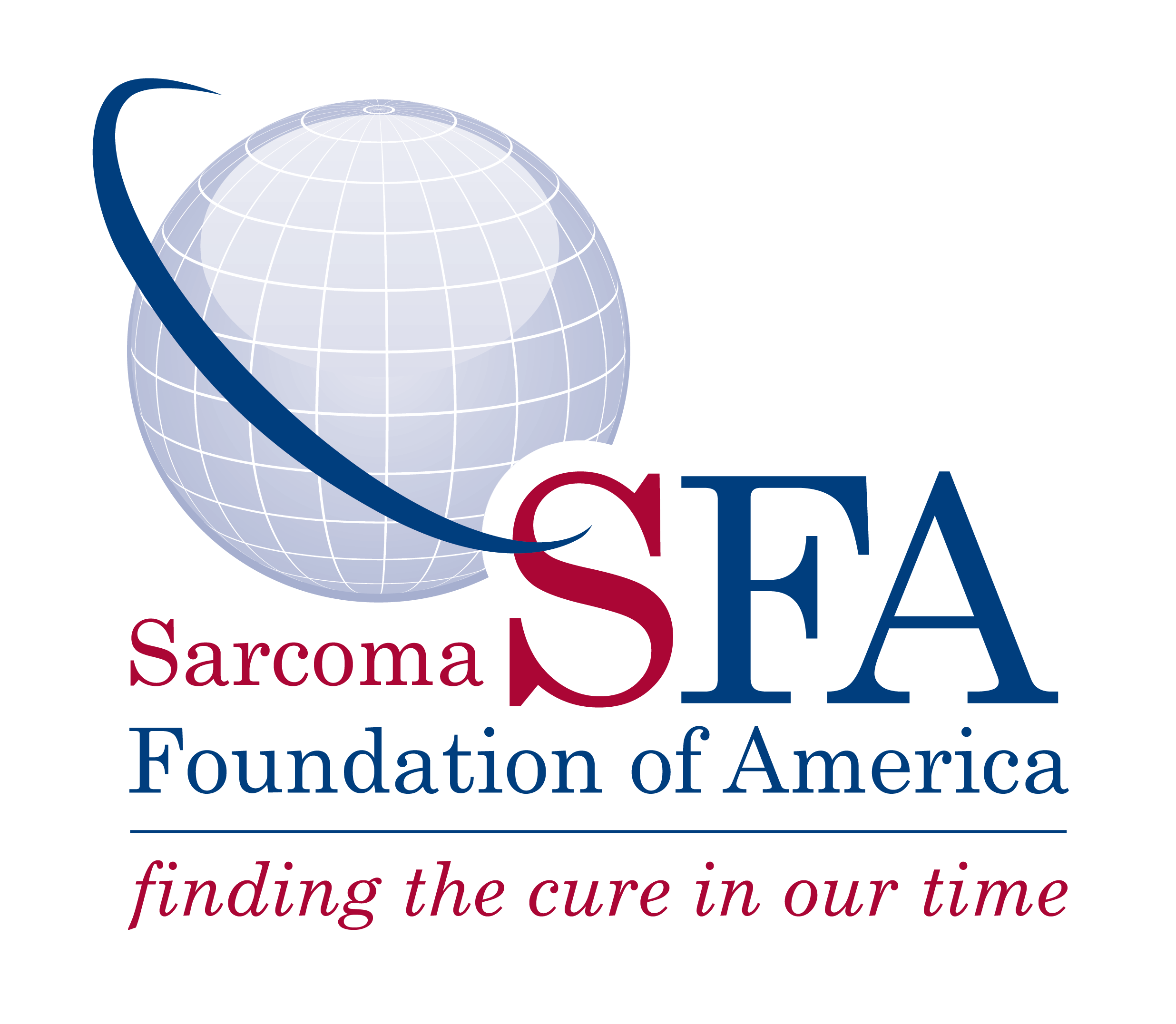Osteosarcoma
Osteosarcoma, the most common primary malignant bone tumor, is composed of spindle cells that produce osteoid. Osteosarcoma is a disease primarily of adolescents and young adults, although it can occur in older individuals. In older individuals it can frequently be linked to Paget’s disease, fibrous dysplasia or radiation exposure. In younger individuals it is virtually always high grade and is a highly aggressive tumor. In older individuals, osteosarcoma can be a low grade tumor which is locally invasive but has a much lower tendency to metastasize.
The most common clinical presentation of osteosarcoma is pain in the involved region of bone, with or without an associated soft tissue mass. Pain is often attributed to trauma or vigorous physical exercise, both of which are common in the patient population at risk. Symptoms are usually present for several months before the diagnosis is made. Osteosarcoma can occur in any bone of the body. Approximately half of all osteosarcomas originate in the region around the knee. The upper arm is the next most common location but it can present in any bone.
Osteosarcoma metastasizes very early in its evolution. Approximately 20% of patients present with radiographically detectable metastatic disease, but virtually all patients have subclinical, microscopic metastasis. The most frequent site for metastatic disease is the lung. Much less frequently, metastases at initial diagnosis occur in other bones and soft tissues. Systemic symptoms, such as fever and weight loss, occur rarely in the absence of very advanced disease.
Epidemiology
Osteosarcoma has a bimodal age distribution with the first peak in the second decade of life and the second among older adults. In older patients osteosarcoma arises frequently in abnormal bone, such as those affected by long standing Paget’s disease. Estimates of the frequency of osteosarcoma vary. It is extremely rare before the age of 5. The peak incidence occurs in the second decade of life during the adolescent growth spurt. The modal age of incidence is 16 years for girls and 18 for boys. It is estimated that approximately 400 children and adolescents younger than 20 years of age are diagnosed with osteosarcoma each year in the United States. Boys are affected more frequently in most series and the incidence in African American children is slightly higher than in caucasians.
Treatment and Follow-up for Localized Disease
Almost all patients with osteosarcoma have microscopic metastatic disease at the time of diagnosis. The successful treatment requires systemic chemotherapy. Despite the effectiveness of chemotherapy against microscopic disease it cannot control clinically detectable disease. Tumors that can be clinically detected by conventional techniques, both at the primary site and all sites of metastatic disease require local control. Osteosarcoma is extremely resistant to radiation therapy, and therefore local control is usually surgery. Advances made in surgery have significantly improved the clinical practice and options available.
The last national North American based randomized Phase III pediatric cooperative group study jointly administered by the Children’s Cancer Group and the Pediatric Oncology Group addressed two study questions. The study tested whether the addition of ifosfamide and/or muramyl tripeptide – phosphatidyl ethanolamine (MTP-PE) to the three other agents used in the standard treatment of osteosarcoma (doxorubicin, cisplatin, high dose methotrexate) would improve the probability of disease free survival. The preliminary results of this trial did not demonstrate a benefit for the patients who were treated with the addition of ifosfamide or muramyl tripeptide – phosphatidyl ethanolamine alone. Standard chemotherapy at present is therefore still comprised of cisplatin, doxorubicin and high dose methotrexate.
Surgical treatment needs to be a complete resection of the tumor with a margin of normal tissue. As most tumors occur in an extremity this can be achieved in virtually all patients. Historically this surgery was an amputation. Now the vast majority are treated with limb salvage procedures. A variety of options for limb salvage exist dependent upon the size, location of the tumor and age of the patient among many other factors.
Treatment and Follow-up for Metastatic Disease
The standard management of patients with metastatic disease follows the same general principles as those who present with localized disease. Patients undergo surgery to remove all evidence of bulk disease. This includes the primary tumor as well as all sites of detectable metastatic disease. Several chemotherapy and surgical timing approaches have been reported for the treatment of these patients. Survival has clearly been enhanced by aggressive treatment designed with a curative intent.
Targeted Therapies
New therapies are clearly needed for the treatment of osteosarcoma patients. Patients who present with metastatic disease or develop recurrent disease have a poor prognosis and are appropriate for consideration for clinical trials of novel agents. Clinical trials are being performed at a number of institutions throughout the United States. Monoclonal antibodies against osteosarcoma may prove useful as treatments or for delivering drugs or radiopharmaceuticals directly to tumor. Therapies such as trastuzumab, which targets the epidermal growth factor receptor type-2, are being tested in osteosarcoma. Other biologic approaches such as the use of inhaled granulocyte macrophage colony stimulating factor are being tested and the use of others such as the interleukins and interferons are being tested at some sites. Bone seeking isotopes such as samarium may allow the delivery of extremely high dose local radiation therapy, perhaps providing an appropriate treatment approach for sites of mineralized disease. Studies of new drugs such as trimetrexate are underway as are studies of conventional agents administered via inhalation to treat pulmonary metastases.

